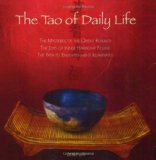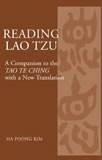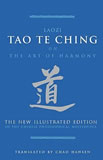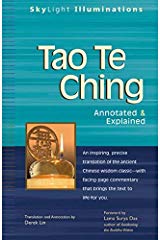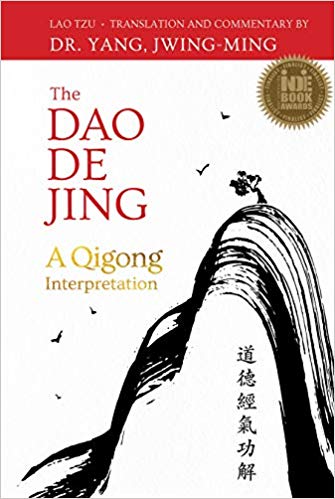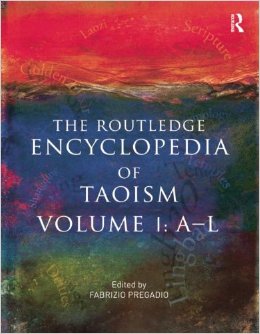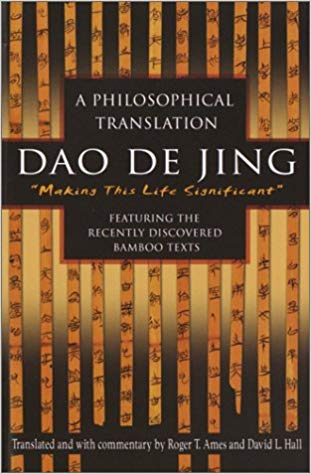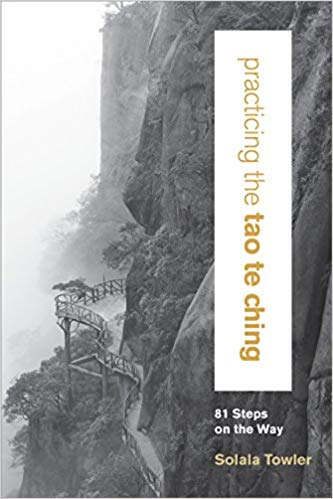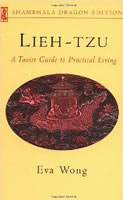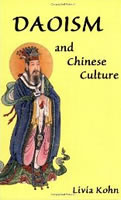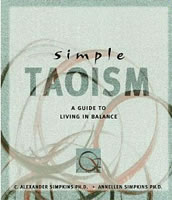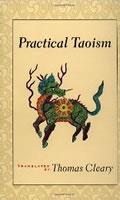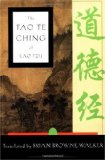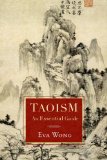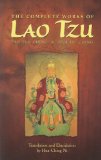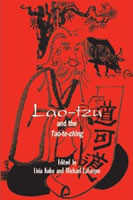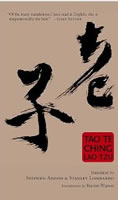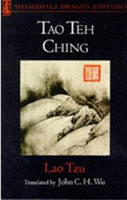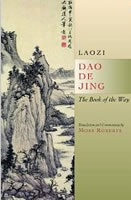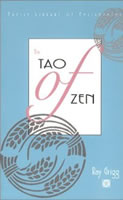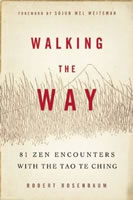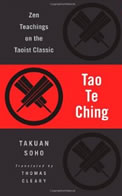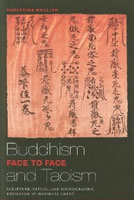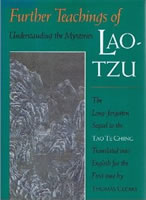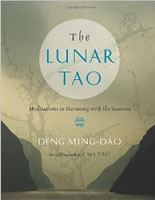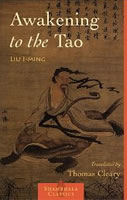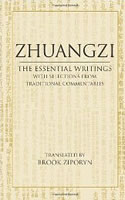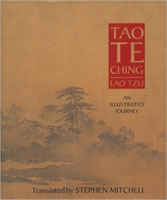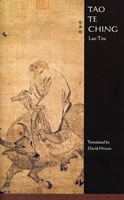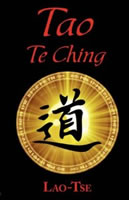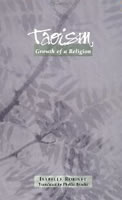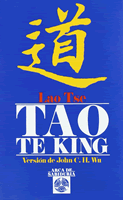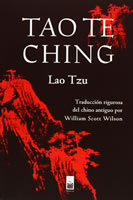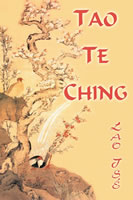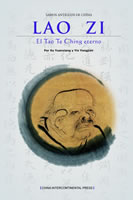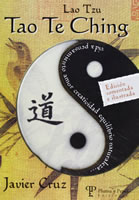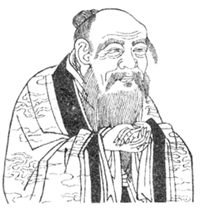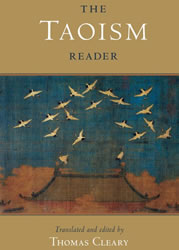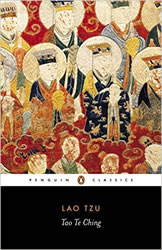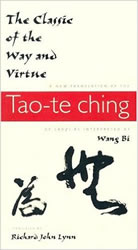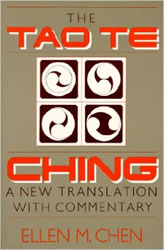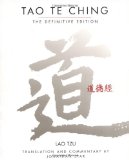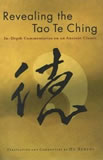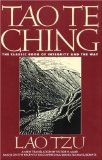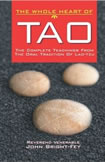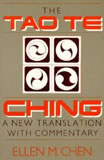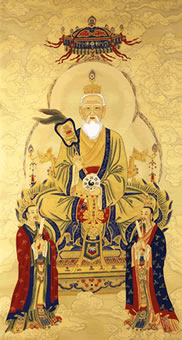Chapter 74, Tao Te Ching (Dao De Jing) by Lao Tzu (Laozi): English Translations, Bibliography, Commentary, Links, Taoism, Indexes, Wade-Giles Romanization (original) (raw)
Tao Te Ching(Dao De Jing)
Classic of the Way and Virtue

By Lao Tzu (Laozi)
Compiled and Indexed by Michael P. Garofalo
Green Way Research, Valley Spirit Center, Gushen Grove Notebooks, Vancouver, Washington
Chapter 73 Chapter 75 Index to All the Chapters Daoism ConcordanceCommentary Cloud Hands Blog
Chapter 74
Tao Te Ching(Dao De Jing) by Lao Tzu
Classic Book (Ching) about the Tao (Way, Nature, Patterns, Processes) and Te (Virtue, Potency, Power, Integrity, Wise Person, Sage)
Concordance: Indexing, Search Terms, Topics, Themes, Keys, Subjects
English and Chinese (Wade-Giles) Terms: The Fear (wei) of Death (ssu), Executioner, Carpenter, Kill or Execute (sha), Danger, Skill, Hazards, Threaten (ch�), Overcoming Delusions, Worries, Professions, Skills, Rare or Few (hsi), Avoiding Inappropriate Occupations, Constantly (ch'ang), Having Relevant Skills at Work, Law, Government, Intimidation, Dishonest or Bizarre (ch'i), Lumberjack, Get or Take (t�), Tree, Safety, Criminals, Lord of Death, Injury or Wound (shang), People (min), Seize or Hold (chih), Cutting Your Hands, Craftsman or Artisan (chiang), Dare or Venture (kan), Chopping, Wood, Inevitable, Carpenter (cho), Master or Great (ta), Capital Punishment 制惑
T�rminos en Espa�ol: El miedo de la Muerte, Verdugo,Carpintero, Mata,Ejecutar, Peligro, Habilidad, Peligros, Amenazar, Superaci�n Delirios, Preocupaciones,Profesiones, Habilidades, Raras, Pocos, Constantemente, Derecho,Gobierno, Intimidaci�n, Deshonesto,Le�ador, �rbol, Seguridad, Delincuentes,Se�or de la Muerte, Lesi�n, Herida, Personas, Incautar, Artesano, Picar, Madera, Inevitable,Maestr�a, Gran.
Electronic Concordance for all 81 Chapters of the Tao Te Ching
English Language Translations of the Tao Te Ching
"The people do not fear death,
Why threaten them with death?
Suppose the people always fear death,
One who does strange things,
I shall seize and kill,
Then who dares to do strange things?
Killing is carried out by the executioner.
To replace the executioner and kill,
Is like chopping wood in place of the master carpenter.
To chop wood in place of the master carpenter,
Rarely one does not hurt one's own hand."
- Translation byEllen M. Chen, Chapter 74
"If people don't love life, they won't fear death, and threatening them with it won't work.
If people have lives worth living, then the threat of death is meaningful,
and they'll do what is right to avoid it.
But killing itself should be the province of the great executioner alone.
Trying to take his place and kill is like cutting wood in the place of the master carpenter:
The odds are you'll hurt your own hand."
- Translation byBrian Walker, Chapter 74
"If the people do not fear death,
For reasons of extreme poverty or suffering,
What is the point of threatening them with death?
If the people fear death,
And if the outlaws are captured and killed,
Who will dare to break the law?
Yet, the act of killing should always be
The exclusive province of the Great Executioner.
Therefore, to kill in place of the Great Executioner is
Like hewing wood in place of the master carpenter;
Few, if ever, will escape cutting their own hands."
- Translated by Yasuhiko Genku Kimura, Chapter 74
"The people are not frightened of death.
What then is the use of trying to intimidate them with the death-penalty?
And even supposing people were generally frightened of death
And did not regard it as an everyday thing,
Which of us would dare to seize them and slay them?
There is the Lord of Slaughter always ready for this task,
And to do it in his stead is like thrusting oneself into the master-carpenter's place
And doing his chipping for him.
Now �he who tries to do the master-carpenter's chipping for him
is lucky if he does not cut his hand.�
- Translated by Arthur Waley, 1934, Chapter 74
"The people are not afraid of death;
Why threaten them with death?
Supposing that the people are afraid of death,
And we can seize and kill the unruly,
Who would dare to do so?
Often it happens that the executioner is killed.
And to take the place of the executioner
Is like handling the hatchet for the master carpenter.
He who handles the hatchet for the master carpenter
seldom escapes injury to his hands."
- Translated by Lin Yutang, 1948, Chapter 74
"Since the people do not fear death,
What is it for to frighten them with death?
If the people fear death and I can catch and kill those who make trouble,
Who dares to make trouble?
There is always someone who is in charge of inflicting death.
Inflicting death in place of those who are in charge of it can be described
as hewing wood in place of a skillful carpenter.
Of those who hew wood in place of skillful carpenters, few have not cut their own hands."
- Translated by Ren Jiyu, Chapter 74
"If people don�t fear death
How will you frighten them with death?
If people always fear death
And I seize and execute
Anyone who does anything new,
Who will dare to move?
There is a public executioner who kills.
Killing on behalf of the public executioner,
Is called cutting wood on behalf of the carpenter.
In cutting wood on behalf of the carpenter,
There are few who escape hurting their hands."
- Translated by A. S. Kline, 2003, Chapter 74
"The people have no fear of death;
why then seek to awe them by the threat of death?
If the people feared death and I could put to death evil-doers,
who would dare to offend?
There is one appointed to inflict death.
He who would usurp that position resembleth a hewer of wood
doing the work of a carpenter.
Such an one, presumptuous, will be sure to cut his own hands."
- Translated (Interpolated) byAleister Crowley, 1918, Chapter 74
"It is not the leader's role to play judge and jury, to punish people for 'bad' behaviour.
In the first place, punishment does not effectively control behaviour.
But even if punishment did work, what leader would dare to use fear as a teaching method?
The wise leader knows that there are natural consequences for every act.
The task is to shed light on these natural consequences, not to attack the behaviour itself.
If the leader tries to take the place of nature and act as judge and jury,
the best you can expect is a crude imitation of a very subtle process.
At the very least, the leader will discover that the instrument of justice cuts both ways.
Punishing others in punishing work."
- Translated by John Heider, 1985, Chapter 74
"If the citizens do not fear death,
How can you use death to frighten them?
Assuming you could ensure that the citizens always fear death,
And I get hold of those who act strange and unusual and kill them,
Then who would be daring?
There will always exist an executioner.
Now, to take the place of the executioner to do the killing,
This is called taking the place of a great craftsman to carve wood.
Now, of those who take the place of a great craftsman to carve wood,
Few will not injure their hand!"
- Translated byBruce R. Linnell, 2015, Chapter 74
"If the people fear death, why frighten them with death?
Even if one could cause the people always to fear death
and could seize and kill those who make ingenious things,
who would dare to act thus?
There is always a Chief Executioner who kills.
To kill in the place of the Chief Executioner may be called:
to chop in the place of the Master Carpenter.
Now in chopping in place of the Master Carpenter,
few will escape maiming their hands!"
- Translated by Jan Julius Lodewijk Duyvendak, 1954, Chapter 74
"If people are not afraid of death,
how can they be threatened by it?
But if they always live in fear of death,
and still continue in their lawlessness,
we can arrest and kill them.
Who then would dare?
And yet there is a Lord of Death whose charge it is to kill.
To take his place and kill would be like carving wood in place of the master carpenter.
Few would escape without injuring their hands."
- Translated byTim Chilcott, 2005, Chapter 74

This webpage work is licensed under a Creative Commons Attribution-NonCommercial-NoDerivatives 4.0 International License.
Created by Michael P. Garofalo, Green Way Research, Valley Spirit Center, Gushen Grove Notebooks, Vancouver, Washington � 2020 CCA 4.0
Simple Taoism: A Guide to Living in Balance By Alexander Simkins.
By Alexander Simkins.
The Tao of Daily Life: The Mysteries of the Orient Revealed By Derek Lin.
By Derek Lin.
Everyday Tao: Living with Balance and Harmony By Ming-Dao Deng.
By Ming-Dao Deng.
Ripening Peaches: Taoist Studies and Practices
Tai Chi Chuan, Qigong, Taoist Body-Mind Arts and Practices
How to Live a Good Life: Advice from Wise Persons
The Tao of Pooh By Benjamin Hoff.
By Benjamin Hoff.
Scholar Warrior: An Introduction to the Tao in Everyday Life By Ming-Dao Deng.
By Ming-Dao Deng.
Vitality, Energy, Spirit: A Taoist Sourcebook Translated by Thomas Cleary.
Translated by Thomas Cleary.
"If people do not fear death
How can you threaten them with it?
If people live in constant fear of death,
Because those who break the law are seized and killed,
Who would dare to break the law?
There has always been an officia executioner.
If you take the law into your own hands
And try to take his place,
It is like trying to take the place of a
master carpenter
In which case you would probably hurt your hands."
- Translated byJohn R. Mabry, Chapter 74
"If the people do not stand in awe of death,
What is the point of threatening them with the death penalty?
But even suppose the people were in constant fear of death,
Who would dare to seize the evil-doers and slaughter them?
Leave killing to the Great Slayer.
He who usurps the place of the Great Slayer
Is like one who seeks to assist a master joiner with an axe.
Now he who assists a master joiner with an axe
Rarely fails to injure his own hands."
- Translated byHerman Ould, 1946, Chapter 74
"If the people no longer fear death,
How can one threaten them with death?
If one causes them constantly to fear death and captures and kills those who are tricky,
Who would dare to be tricky?
The one who constantly is the executioner can kill.
One who kills by taking the place of the great executioner
is like one who takes the place of the great carpenter in cutting wood.
Of those who have taken the place of the great carpenter,
Few have not hurt their own hands!"
- Translated by Yi Wu, Chapter 74
"When people are no longer afraid of death, how can they be disciplined by death?
And if someone likes to be abnormal he may be arrested and punished, then who else would dare to be abnormal?
Since the one to kill is killed, a great professional killer is like a great professional chopper whose hands are subject to be hurt."
- Translated by Tang Zi Chang, Chapter 74
Revealing the Tao Te Ching: In-Depth Commentaries on an Ancient Classic By Hu Xuzehi
By Hu Xuzehi
Tao Te Ching Annotated translation by Victor Mair
Annotated translation by Victor Mair
Reading Lao Tzu: A Companion to the Tao Te Ching with a New Translation By Ha Poong Kim
By Ha Poong Kim
The Philosophy of the Daodejing By Hans-Georg Moeller
By Hans-Georg Moeller
Tai Chi Chuan, Qigong, Taoist Body-Mind Arts and Practices
How to Live a Good Life: Advice from Wise Persons
Dao De Jing: A Philosophical Translation By Roger T. Ames and David T. Hall
By Roger T. Ames and David T. Hall
Be Enlightened! A Guidebook to the Tao Te Ching and Taoist Meditation: Your Six-Month Journey to Spiritual Enlightenment By Wes Burgess
By Wes Burgess
The Way and Its Power: Lao Tzu's Tao Te Ching and Its Place in Chinese Thought By Arthur Waley
By Arthur Waley
"If the people do not fear death, how can one frighten them with death?
If we teach people to fear death, then when one rebels he can be seized and executed; after that who will dare to rebel?
There is always an officer to execute a murderer, but if one takes the place of the executioner, it is like taking the place of a skilled carpenter at his hewing.
If one takes the place of the skilled carpenter he is liable to cut himself.
Therefore do not interfere with Tao."
- Translated byDwight Goddard, 1919, Chapter 74
A Chinese Language Version of Chapter 74 of the Tao Te Ching by Lao Tzu Anoteon my style of displaying the Chinese characters of the Tao Te Ching
民不畏死.
奈何以死懼之.
若使民常畏死, 而為奇者, 吾得執而殺之, 孰敢.
常有司殺者殺.
夫司殺者.
是大匠斲.
夫代大匠斲者, 希有不傷其手矣.
- Chinese characters, Tao Te Ching, Chapter 74
min pu wei ssu.
nai ho yi ssu ch� chih.
jo shih min ch'ang wei ssu, erh wei ch'i ch�, wu t� chih erh sha chih, shu kan.
ch'ang yu ssu sha ch� sha.
fu tai ssu sha ch� sha.
shi wei tai ta chiang cho.
fu tai ta chiang cho ch�, hsi yu pu shang ch'i shou yi.
- Wade-Giles (1892) Romanization, Tao Te Ching, Chapter 74
Audio Version in Chinese of Chapter 74 of the Tao Te Ching
min bu wei si.
nai he yi si ju zhi.
ruo shi min chang wei si, er wei qi zhe, wu de zhi er sha zhi, shu gan.
chang you si sha zhe sha.
fu dai si sha zhe sha.
shi wei dai da jiang zhuo.
fu dai da jiang zhuo, xi you bu shang qi shou zhe yi.
- Hanyu Pinyin (1982) Romanization, Daodejing, Chapter 74
Tao Te Ching in Chinese characters and English (includes a word by word key) from YellowBridge
Tao Te Ching in Chinese characters, Hanyu Pinyin (1982) Romanization, English and German by Dr. Hilmar Alquiros.
Laozi Daodejing: Chapters with Chinese characters, seal script, detailed word by word concordance, Pinyin (tone#), German, French and English.
Chinese and English Dictionary, MDGB
Dao De Jing Wade-Giles Concordance by Nina, Dao is Open
Dao De Jing English and Wade-Giles Concordance by Mike Garofalo
Tao Te Ching in Pinyin Romanization with Chinese characters, WuWei Foundation
Tao Te Ching in Pinyin Romanization
Tao Te Ching in Chinese characters and English
Tao Te Ching in Chinese characters, English, Word by word analysis, Zhongwen
Tao Te Ching: The Definitive Edition
Tao Te Ching in Chinese characters: Big 5 Traditional and GB Simplified
Chinese Characters, Wade-Giles and Pinyin Romanizations, and 16 English Translations for Each Chapter of the Daodejing by Mike Garofalo.
Tao Te Ching in Chinese characters, Wade-Giles and Pinyin Romanization spellings, English; a word for word translation of the Guodian Laozi Dao De Jing Version.
Lao Zi's Dao De Jing: A Matrix Translation with Chinese Text by Bradford Hatcher.
"When the people are not afraid of death, why threaten them with death sentences?
Even supposing the people are constantly afraid of death and we can seize
and kill those who are unruly or vicious, who would dare to slay them?
There's always the master executioner.
To kill in his stead is like thrusting oneself into he master-carpenter's place and doing his chipping for him.
"He who tries it is lucky if he doesn't cut his hand," they say.
To undertake executions for the master executioner is like hewing wood for him.
It rarely happens you escape injuring your own hands.
Now, often it happens as well that the executioner is killed.
And to take the place of the executioner is in part like handling the hatchet for the master carpenter.
He who handles the hatchet for the master carpenter seldom escapes injury to his hands.
- Translated byTormond Byrd, 1997, Chapter 74
"When the people are not afraid of death, what use is it to frighten them with the punishment of death?
If the people were constantly afraid of death and we could arrest and kill those who commit treacheries,
who then would commit such?
Only the Supreme Executioner kills.
To kill in place of the Supreme Executioner is to hack instead of a great carpenter.
Now if one hacks in place of a great carpenter one can scarcely avoid cutting one's own hand."
- Translated by Ch'u Ta-Kao, 1904, Chapter 74
The Routledge Encyclopedia of Taoism
The Complete Works of Lao Tzu: Tao Teh Ching & Hua Hu Ching
Tai Chi Chuan, Qigong, Taoist Body-Mind Arts and Practices
The Dao De Jing: A Qigong Interpretation by Dr. Yang Jing-Ming
How to Live a Good Life: Advice from Wise Persons
Dao De Jing: A Philosophical Translation by Roger T. Ames and David L. Hall
Practicing the Tao Te Ching: 81 Steps on the Way by Solala Towler
"When people do not fear death,
What is the use of frightening them with the death penalty?
When people are constantly afraid of death,
And we can arrest and execute criminals,
Who would dare to commit crimes?
Only the executioner kills.
To kill instead of the executioner is like a woodcutter
taking a master-carpenter's place.
When someone carves instead of the master-carpenter,
He can usually expect to injure his hand."
- Translated by Chohan Chou-Wing, Chapter 74
"Subdue Delusion
Chih Huo
When the people are not afraid of death,
What avails it to scare them with death?
Assuming that they often do fear death,
And that any pervert can be seized and killed,
Who dares to do the killing?
It is the job of the Director of Death to kill.
To take over the job of the Director of Death
Is like wielding the hammer for the master-builder.
He who wields the hammer for the master-builder
Seldom escapes wounding himself in the hand."
- Translated by Henry Wei, 1982, Chapter 74
"Since the people do not fear death,
What is it for to frighten them with death?
If the people fear death and I can catch and kill those who make trouble,
Who dares to make trouble?
There is always someone who is in charge of inflicting death.
Inflicting death in place of those who are in charge of it can be described as hewing wood in place of a skillful carpenter.
Of those who hew wood in place of skillful carpenters, few have not cut their own hands."
- Translated by Jiyu Ren, 1985, Chapter 74
Lieh-Tzu: A Taoist Guide to Practical Living Translated by Eva Wong
Translated by Eva Wong
The Daodejing of Laozi Translated by Philip Ivahoe
Translated by Philip Ivahoe
Daoism: A Beginner's Guide By James Miller
By James Miller
Early Daoist Scriptures Translated by Stephen Bokencamp
Translated by Stephen Bokencamp
Tai Chi Chuan, Qigong, Taoist Body-Mind Arts and Practices
How to Live a Good Life: Advice from Wise Persons
Simple Taoism: A Guide to Living in Balance By Alexander and Annellen Simpkins
By Alexander and Annellen Simpkins
Practical Taoism Translated by Thomas Cleary
Translated by Thomas Cleary
Daoism and Chinese Culture By Livia Kohn
By Livia Kohn
"If the people are not afraid to die,
How can you threaten them with death?
If the people are kept in constant fear of death,
And if it were possible to arrest and put to death the law-breakers,
Who would dare do this?
It is the master executioner who does the killing.
To assume the role of the master executioner and do the killing for oneself
Is like carving wood for oneself
Instead of leaving it to the master carpenter.
Those who carve wood for themselves
Instead of leaving it to the master carpenter
Rarely escape without cutting their own hands."
- Translated by Keith H. Seddon, Chapter 74
"It is futile to threaten people with death.
If they are not afraid to die, they cannot be frightened by the death penalty;
and if they are afraid to die, why should we kill them?
Only Nature knows the proper time for a man to die.
To kill is to interrupt Nature's design for dying,
Like a blundering apprentice judging himself to be wiser than his master.
Whenever an apprentice thinks he is smarter than his master, he is very likely to hurt himself."
- Translated by Archie J. Bahm, 1958, Chapter 74
"If people are not afraid to die, what is the use of threatening them with the punishment of death?
On the other hand,
if people value their lives, and if outlaws are seized and killed or are killed by what they are doing,
who would dare risk a life of peace for the sake of an insecure future?
Yet it is always true that one who takes charge of killing is killed in turn.
To become the executioner of artificial righteousness is like the inexperienced lad who would brandish a sharp axe of a master carpenter.
He can seldom escape cutting himself."
- Translated by Hua-Ching Ni, 1995, Chapter 74

This work is licensed under a Creative Commons Attribution-NonCommercial-NoDerivatives 4.0 International License.
Created by Michael P. Garofalo, Green Way Research, Valley Spirit Center, Gushen Grove Notebooks, Vancouver, Washington � 2020 CCA 4.0
The Complete Works of Lao Tzu: Tao Teh Ching & Hua Hu Ching Translation and elucidation by Hua Ching Ni
Translation and elucidation by Hua Ching Ni
The Tao Te Ching of Lao Tzu Translated by Brian Walker
Translated by Brian Walker
Tao Te Ching Translated by Arthur Waley
Translated by Arthur Waley
Tao - The Way Translated by Lionel and and Herbert Giles
Translated by Lionel and and Herbert Giles
Taoism: An Essential Guide By Eva Wong
By Eva Wong
Tai Chi Chuan, Qigong, Taoist Body-Mind Arts and Practices
How to Live a Good Life: Advice from Wise Persons
"If people have no fear of death
It's pointless to threaten them with it.
If people were in constant fear of death,
And if anyone acting deviously
Were to be seized and executed,
Who would dare to do so?
The Master Executioner is always there to kill.
If you attempt to play his role
It is like trying to do the work of a master lumberjack.
The one who has no skill to do this work
Seldom escapes with his hands unhurt."
- Translated byAngieszka Solska, 2005, Chapter 74
"When the people are no longer afraid of death, why threaten them with the executioner? If the people feared death, and execution was imposed as a penalty; who would dare transgress The Law? Heaven is the Master Executioner. Whoever tries to take Heavens place is like an amateur trying to use the master carpenters' tools to hew wood, if he tries to use the tools he will likely hew himself." - Translated by Rivenrock, Chapter 74
If there is someone who doesn't fear death, why threaten to kill them?
If people did fear death and one were to capture and kill the devious few, who would dare to be devious?:
Iff the people are always at risk of execution, there will never lack an executioner.
Now, to kill like an executioner is like-hacking at wood.
Instead of masterful carpentry, few are there who can escape cutting their own hands!"
- Translated byJerry C. Welch, 1998, Chapter 74
Tao Te Ching
Tai Chi Chuan, Qigong, Taoist Body-Mind Arts and Practices
How to Live a Good Life: Advice from Wise Persons
Lao Tzu: Tao Te Ching
Lao-Tzu and the Tao-Te-Ching
Dao De Jing: The Book of the Way
"If people are not afraid to die, how death can be used to threaten them?
If we make people afraid of death, and execute a few extreme offenders, who would dare to offend again?
It is normal to have executioners who kill.
Substituting an executioner in killing is like substituting a master lumberjack in chopping trees.
Chopping trees by non-professionals rarely results in no hand injuries."
- Translated byThomas Z. Zhang, Chapter 74
"When people are at one with Infinity,
they have no fear of death
and so they are indifferent to threats.
When people are confused
with the distinction of life and death,
they fear death.
If death is the penalty for breaking the law,
the vast majority will be law abiding.
There are always official executioners
and they are at one with killing.
If you try to take their place,
it is the same as trying to cut wood
in place of the master carpenter.
If you try to take the master carpenter's place,
you will only succeed in cutting
your hands."
- Translated by John Worldpeace, Chapter 74
"If people were content with their own deaths
You could not use force on them; they would be immune
But this is not the way the world is
If you threaten them with death to make them behave
You must assign someone to kill them, or do it yourself
Who, then, kills: you, or the executioner, or the state?
Someone must take the responsibility
Whoever is responsible for death has put his way above the tao
Yet though he can end a life, the tao will by its nature find a way to return
Any sane man would find in that cause for worry."
- Translated byTed Wrigley, Chapter 74
Walking the Way: 81 Zen Encounters with the Tao Te Ching
The Tao of Zen
Tai Chi Chuan, Qigong, Taoist Body-Mind Arts and Practices
How to Live a Good Life: Advice from Wise Persons
Tao Te Ching: Zen Teachings on the Taoist Classic
Buddhism and Taoism Face to Face: Scripture, Ritual, and Iconographic Exchange in Medieval China
Ripening Peaches: Taoist Studies and Practices
"If the people do not fear death,
How then can you frighten them by death?
But if you cause the people continually to fear death,
And if one of them becomes a great criminal,
Can you take hold of him and slay him?
Would you dare to this?
There is always one, the Executioner, who kills men.
But, on the contrary, if you kill as if you were Executioner,
It would be as if you tried to do the work of a Master Carpenter.
In attempting to do the work of a Master Carpenter,
Few there be who do not wound their own hands."
- Translated by Isabella Mears, 1916, Chapter 74
"It makes no sense to threaten with death him who is not afraid of death.
Yet he who threatens others with death and takes pleasure in this will be destroyed.
The theme of life and death is under control of Tao alone.
No one is allowed to control it instead of Tao!
He who decides to do such a thing only harms himself."
- Translated by Mikhail Nilolenko, Chapter 74
"When the people are not afraid of death, wherefore frighten them with death?
Were the people always afraid of death, and were I able to arrest and put to death those who innovate, then who would dare?
There is a regular executioner whose charge it is to kill.
To kill on behalf of the executioner is what is described as chopping wood on behalf of the master carpenter.
In chopping wood on behalf of the master carpenter, there are few who escape hurting their own hands instead."
- Translated byD. C. Lau, 1963, Chapter 74
Further Teachings of Lao-Tzu: Understanding the Mysteries (Wen Tzu)
The Lunar Tao: Meditations in Harmony with the Seasons
Awakening to the Tao
Ripening Peaches: Taoist Studies and Practices By Mike Garofalo
Zhuangzi: The Essential Writings with Selections from Traditional Commentaries
The Inner Chapters of Chuang Tzu (Zhuangzi)Translated by A. C. Graham
Tai Chi Chuan, Qigong, Taoist Body-Mind Arts and Practices
How to Live a Good Life: Advice from Wise Persons
"When people fear not death, then why
Affright them with its fear?
If kept in awe of it could I
Seize one for some wild deed to die,
And slay him? Who would dare?
To slay the slayer stands always
The executioner,
Now, if some one his work essays,
And seeks to slay the one who slays,
That man is sure to err.
Great carpenter, we call him, who
To slay the slayer stands,
And hewing is his work to do,
Who takes the hewer's place, to hew,
Is sure to cut his hands."
- Translated by Isaac Winter Heysinger, 1903, Chapter 74
"If you do not fear death,
then how can it intimidate you?
If you aren't afraid of dying,
there is nothing you can not do.
Those who harm others
are like inexperienced boys
trying to take the place of a great lumberjack.
Trying to fill his shoes will only get them seriously hurt."
- Translated by John H. McDonald, 1996, Chapter 74
Vom Gericht �ber Leben und Tod
Wenn das Volk den Tod nicht f�rchtet,
wer wollte es dann mit Todesfurcht regieren?
F�rchtet es den Tod,
und es wird dennoch ein abscheuliches Verbrechen begangen,
wer getraute sich dann zu t�-ten?
Es findet sich immer ein Gerichtsherr,
der Todesurteile f�llt und vollstreckt.
Wer aber sich selbst zum Richter �ber Leben und Tod macht,
der gleicht einem, der,
an Stelle des Zimmermeisters die Axt benutzend,
sich nur zu leicht selbst in die Hand haut.
- Translated by Rudolf Backofen, 1949, Chapter 74
"Wenn die Leute den Tod nicht scheuen,
wie will ich sie dann mit dem Tode einsch�chtern?
Wenn ich aber die Leute
best�ndig in Furcht vor dem Tode halte,
und wenn einer Wunderliches treibt,
soll ich ihn ergreifen und t�ten?
Wer traut sich das?
Es gibt immer eine Todesmacht, die t�tet.
Anstelle dieser Todesmacht zu t�ten, das ist,
wie wenn man anstelle eines Zimmermanns
die Axt f�hren wollte.
Wer statt des Zimmermanns
die Axt f�hren wollte,
kommt selten davon,
ohne das er sich die Hand verletzt."
- Translated by Richard Wilhelm, 1911, Chapter 74
"The people do not fear at all to die;
What's gained therefore by threatening them with death?
If you could always make them fear decease,
As if it were a strange event and rare,
Who then would dare to take and slaughter them?
The executioner is always set
To slay, but those who substitute for him
Are like would-be master carpenters
Who try to chop as that skilled craftsman does
And nearly always mangle their own hands!"
- Translated by Raymond Blakney, 1955, Chapter 74

This webpage work is licensed under a Creative Commons Attribution-NonCommercial-NoDerivatives 4.0 International License.
Created by Michael P. Garofalo, Green Way Research, Valley Spirit Center, Gushen Grove Notebooks, Vancouver, Washington � 2020 CCA 4.0
Tao Te Ching: An Illustrated Journey
Tao Te Ching
The Book of Tao: Tao Te Ching - The Tao and Its Characteristics
Ripening Peaches: Taoist Studies and Practices
Taoism: Growth of a Religion
Zhuangzi (Chuang Tsu), Daoist Scripture: Bibliography, Links, Resources, Quotations, Notes
Zhuangzi: Basic Writings
Zhuangzi Speaks: The Music of Nature
Tai Chi Chuan, Qigong, Taoist Body-Mind Arts and Practices
How to Live a Good Life: Advice from Wise Persons
"When the people do not fear death, of what use is it to overawe them with it as a penalty?
And if they were always held in fear of death, and I could lay my hand upon all evil doers and slay them, would I dare to do it?
There is always the Great Executioner!
For one to usurp that office is like a novice cutting out the work of a great architect.
Such a one rarely fails to cut his own hands!"
- Translated by Walter Gorn Old, 1904, Chapter 74
"Why use death as a deterrent, when the people have no fear of death?
Even supposing they shrank from death as from a monster, and by playing on their terror I could slay them, should I dare?
There is one who inflicts sentence of death.
To usurp his functions and to kill would be to assume the role of Master-Carpenter.
There are few who can act as Master-Carpenter without cutting their hands."
- Translated byC. Spurgeon Medhurst, 1905, Chapter 74
"If you do not fear death,
then how can it intimidate you?
If you aren't afraid of dying,
there is nothing you can not do.
Those who harm others
are like inexperienced boys
trying to take the place of a great lumberjack.
Trying to fill his shoes will only get them seriously hurt."
- Translated by John H. McDonald, 1996, Chapter 74
"Lorsque le peuple ne craint pas la mort, comment l'effrayer par la menace de la mort?
Si le peuple craint constamment la mort, et que quelqu'un fasse le mal, je puis le saisir et le tuer, et alors qui osera l'imiter?
Il y a constamment un magistrat supr�me qui inflige la mort.
Si l'on veut remplacer ce magistrat supr�me, et infliger soi-m�me la mort, on ressemble � un homme (inhabile) qui voudrait tailler le bois � la place d'un charpentier.
Lorsqu'on veut tailler le bois � la place d'un charpentier, il est rare qu'on ne se blesse pas les mains."
- Translated by Stanislas Julien, 1842, Chapter 74
Spanish Language Versions of the Tao Te Ching (Daodejing) Tao Te Ching en Espa�ol
Lao Ts� Tao Te Ching 
Tao Te Ching Traducido por Stephen Mitchell, versi�n espa�ola
Tao Te Ching Traducido al espa�ol por el Padre Carmelo Elorduy
Lifestyle Advice from Wise Persons Consejos de Estilo de Vida de Sabios
Lao Tzu-The Eternal Tao Te Ching
Ripening Peaches: Taoist Studies and Practices By Mike Garofalo Maduraci�n Duraznos: Estudios y Pr�cticas Tao�stas por Mike Garofalo
Tao Te Ching
Lao Tzu - Tao Te Ching
Tao te king
Daodejing Espa�ol, Ingl�s, y Chino Versiones Ling��sticas de la Daodejing
Spanish Language Translations of the Tao Te Ching
"S� los hombres no temen a la muerte,
�C�mo atemorizarlos con la muerte?
Pero si temen a la muerte,
como siempre temen,
y el que viola la ley puede ser apresado y ejecutado,
�qui�n se atrever� entonces a violar la ley?
Existe siempre un funcionario Ejecutor.
Matar, para el Gran Ejecutor,
es como cortar madera para el maestro carpintero;
ser� afortunado si no se hiere su propia mano."
- Translation fromWikisource, 2013, Cap�tulo 74
�A aquel que no teme a la muerte, no tiene sentido amenazarle con la muerte?
Con todo, quien amenaza a los dem�s con la muerte, deleit�ndose con esto, ser� derrotado.
El asunto de la vida y de la muerte es manejado exclusivamente por Tao.
A nadie m�s le compete hacerlo.
Y aquel que se atreva a tal cosa s�lo se har� da�o."
- Translated by Anton Teplyy, 2008, Tao Te Ching,Cap�tulo 74
"S� el pueblo no teme la muerte,
�C�mo atemorizarlo con la muerte?
Pero si teme la muerte,
lo que siempre teme,
y el que viola la ley puede ser apresado y matado,
�qui�n se atrever� a hacer este mal?
La muerte solo es propia de un verdugo.
Quien mata en su lugar
es como sustituir al carpintero en el uso de su herramienta,
raro es que no se hiera la mano."
- Spanish Version Online atRatMachines,
Cap�tulo 74
"Si el pueblo no temiera la muerte, ser�a in�til atemorizarlocon ella.
Si teme morir, como siempre teme, y a�n comete desmanes, puedo cogerlo y matarlo.
�Qui�n se atrever� a continuar en el mal?
Debe matarlo el encargado para ello.
Si lo matara otro por �l, ser�a usando el hacha ensustituci�n del maestro.
Raro ser� el que, sustituyendo almaestro, no hiera su propia mano."
- Translated byCarmelo Elorduy, 2006, Cap�tulo 74
"Cuando un pueblo ya no teme a la muerte
�Por qu� asustarlo con el espectro de la muerte?
Si puedes hacer que un pueblo tema siempre a la muerte y si hay criminales que desaf�an la ley.
�Qui�n tendr� el valor de atraparlos y darles muerte?
Para eso existe siempre el gran magistrado a �l compete aplicar la ley de la muerte y no a otros.
Quien levanta el hacha sin ser carpintero se hiere con sus propias manos."
- Translation fromLogia Medio Dia, 2015, Tao Te Ching, Cap�tulo 74

This webpage work is licensed under a Creative Commons Attribution-NonCommercial-NoDerivatives 4.0 International License.
Created by Michael P. Garofalo, Green Way Research, Valley Spirit Center, Gushen Grove Notebooks, Vancouver, Washington � 2020 CCA 4.0
Commentary, Notes, Links, Comparisons, Suggestions Chapter 74By Mike Garofalo
A concordance search on the word "kill" brings up 'murder or killing (sha)' in Chapters 31, 73, and 74.
"Those that live by the sword, die by the sword." Bible, Matthew 26:52
Every occupation involves consequences to body, mind, and spirit. Some occupations are very dangerous, and require highly trained and skilled employees to do the task, e.g., a nuclear reactor operations supervisor. Beginners are more likely to injure or kill themselves and many others.
Here, Lao Tzu is questioning the value of the execution of criminals. We still debate this topic in 2020. Is capital punishment a deterrent? Back in 700 BCE in China, criminals and enemies could also have their nose, ears, fingers, hands, or feet amputated as "punishment." Lao Tzu also questions the need for so many governmental laws (Chapter 57, 58) and regulations that redefine our various behaviors as criminal activity. For example, selling or possessing cannabis was a criminal activity in the State of Washington until 2012; now it is not.
If a person is not afraid of dying and/or thinks it is heroic and noble to die, he or she is less likely to become bothered by their conscience about their questionable actions, might become amoral, and might become indifferent to threats and punishments. A number of mass killers commit suicide at the end of their murderous sprees. A realist would contend that severe or capital punishment might be a deterrent to criminal activity amongst criminals who are fearful of capture, trial, and punishment by death or amputation. To the average Joe and Jane, an utterly fearless person is insane but culpable .
Next Chapter of the Tao Te Ching #75
Previous Chapter of the Tao Te Ching #73
Chapter and Thematic Index to the Tao Te Ching
Tao Te Ching Commentary, Interpretations, Research Tools, Resources Chapter 74
Das Tao Te King von Lao Tse. Complete versions of all 81 Chapters of the Tao Te Ching by many different translators in many languages: 124 English, 24 German, 14 Russian, 7 Spanish, 5 French and many other languages. Links are organized first by languages, and then alphabetically by translators. Formatting varies somewhat. The original website at Onekellotus went offline in 2012; but, the extensive collection of these Tao Te Ching versions was saved for posterity by the Internet Archive Wayback Machine and available as of 9/9/2015. This is an outstanding original collection of versions of the _Daodejing_─ the Best on the Internet. Caution: copyright infringement may sometimes be an issue at this website.
Tao Te Ching, Translations into English: Terebess Asia Online (TAO). 124 nicely formatted complete English language translations, on separate webpages, of the Daodejing. Alphabetical index by translators. Each webpage has all 81 chapters of the Tao Te Ching translated into English. A useful collection! Many reformatted and colored versions from the original collection atDas Tao Te King von Lao Tse. Caution: copyright infringement may sometimes be an issue at this website.
Lao Tzu: Te-Tao Ching - A New Translation Based on the Recently Discovered Ma-wang-tui Texts (Classics of Ancient China)
Daodejing by Laozi: Chapters with Chinese characters, seal script, detailed word by word concordance, Pinyin (tone#), German, French and English. This is an outstanding resource for serious students of the Tao Te Ching.
Tao Te Ching: A New Translation and Commentary. By Ellen Chen. Paragon House, 1998. Detailed glossary, index, bibliography, notes, 274 pages.
The Tao and Method: A Reasoned Approach to the Tao Te Ching. By Michael Lafargue. New York, SUNY Press, 1994. 640 pages. Detailed index, bibliography, notes, and tables. An essential research tool.
Two Visions of the Way: A Study of the Wang Pi and the Ho-Shang Kung Commentaries on the Lao-Tzu. By Professor by Alan Kam-Leung Chan. SUNY Series in Chinese Philosophy and Culture. State University of New York Press, 1991. Index, bibliography, glossary, notes, 314 pages. ISBN: 0791404560.
Tao Te Ching: The Definitive Edition
Chinese Reading of the DaodejingWang Bi's Commentary on the Laozi with Critical Text and Translation. By Professor Rudolf G. Wagner. A SUNY Series in Chinese Philosophy and Culture. English and Mandarin Chinese Edition. State University of New York Press; Bilingual edition (October 2003). 540 pages. ISBN: 978-0791451823. Wang Bi (Wang Pi, Fusi), 226-249 CE,Commentary on the Tao Te Ching.
Tao Te Ching
The Taoism Reader
Change Your Thoughts - Change Your Life: Living the Wisdom of the Tao
The Routledge Encyclopedia of Taoism.
Lao Tzu's Tao Teh Ching, A Parallel Translation Collection. Compiled by B. Boisen.
Tao Te Ching: The Book of the Way. Revised by Sam Torode based on the translation by Dwight Goddard, 1919. Independent Pub., 2009, 88 pages.
Tao Te Ching: Annotated and Explained. By Derek Lin. Foreword by Lama Surya Das. Skylight Illuminations, SkyLight Paths, 2006. 208 pages.
Comparison and Analysis of Selected English Interpretations of the Tao Te Ching. By Damian J. Bebell and Shannon M. Fera.
Practicing the Tao Te Ching: 81 Steps on the Way. By Solala Towler. Foreword by Chunglang Al Huang. Sounds True, 2016. 320 pages.
The Lunar Tao: Meditations in Harmony with the Seasons
The Classic of the Way and Virtue: A New Translation of the Tao-te Ching of Laozi as Interpreted by Wang Bi.Translated by Richard John Lynn. Translations from the Asian Classics Series. Columbia University Press, 2004. 256 pages.
Tao Te Ching in Chinese characters, Pinyin Romanization, English and German by Dr. Hilmar Alquiros.
Yellow Bridge Dao De Jing Comparison Table Provides side by side comparisons of translations of the Tao Te Ching by James Legge, D. T. Suzuki, and Dwight Goddard. Chinese characters for each paragraph in the Chapter are on the left; place your cursor over the Chinese characters to see the Pinyin Romanization of the Chinese character and a list of meanings.
Translators Index, Tao Te Ching Versions in English, Translators Sorted Alphabetically by Translator, Links to Books and Online Versions of the Chapters
Taoism and the Tao Te Ching: Bibliography, Resources, Links
Spanish Language Translations of the Tao Te Ching, Daodejing en Espa�ol, Translators Index
The Tao of Zen
Chapter 1 in theRambling Taoist Commentaries by Trey Smith. The Rambling Taoists are Trey Smith and Scott Bradley.
The Philosophy of the Daodejing
Valley Spirit, Gu Shen, Concept, Chapter 6 Valley Spirit Center in Red Bluff, California. Sacred Circle in the Gushen Grove.
Lao-tzu's Taoteching
Reading Lao Tzu: A Companion to the Tao Te Ching with a New Translation
Dao De Jing: A Philosophical Translation
Thematic Index to the 81 Chapters of the Tao Te Ching
Lieh-Tzu: A Taoist Guide to Practical Living
Revealing the Tao Te Ching: In-depth Commentaries on an Ancient Classic
Cloud Hands BlogMike Garofalo writes about Mind-Body Arts, Philosophy, Taoism, Gardening, Taijiquan, Walking, Mysticism, Qigong, and the Eight Ways.
The Whole Heart of Tao: The Complete Teachings From the Oral Tradition of Lao Tzu.
Gushen Grove Notebooks for the Tao Te Ching
Research and Indexing by
Michael P. Garofalo
Green Way Research, Valley Spirit Center, Gushen Grove Notebooks (2001-2020)
Red Bluff, California from 1998-2017; Vancouver, Washington from 2107-
Green Way Research, Tao Te Ching, Chapter 74, 2011-2020.
Indexed and Compiled byMichael P. Garofalo
This webpage was last changed, modified, edited, maintained, expanded, reformatted, improved or updated on November 29, 2019.
This webpage was first distributed online on July 17, 2011.

This work is licensed under a Creative Commons Attribution-NonCommercial-NoDerivatives 4.0 International License.
Created by Michael P. Garofalo, Green Way Research, Valley Spirit Center, Gushen Grove Notebooks, Vancouver, Washington � 2020 CCA 4.0
Brief Biography of Michael P. Garofalo, M.S.
Ripening Peaches: Daoist Studies and Practices
Zhuangzi (Chuang Tzu, Zhuang Zhou, Master Chuang) 369�286 BCE
Taoist Perspectives: My Reading List
Bodymind Theory and Practices, Somaesthetics
How to Live a Good Life: Advice from Wise Persons
Qigong (Chi Kung) Health Practices
One Old Daoist Druid's Final Journey: Notebooks of the Librarian of Gushen Grove
Index to Cloud Hands and Valley Spirit Websites
Gushen Grove Notebooks for the Tao Te Ching
Bibliography
Index to English Language Translators of the Tao Te Ching
Thematic Index 1-81
Chapter Index 1-81
Recurring Themes (Terms, Concepts, Leimotifs) in the Tao Te Ching
Spanish Language Translations of the Tao Te Ching
Chinese Characters, Wade-Giles (1892) and Hanyu Pinyin (1982) Romanizations
The Tao Te Ching (Dao De Jing) by Lao Tzu (Laozi) circa 500 BCE
